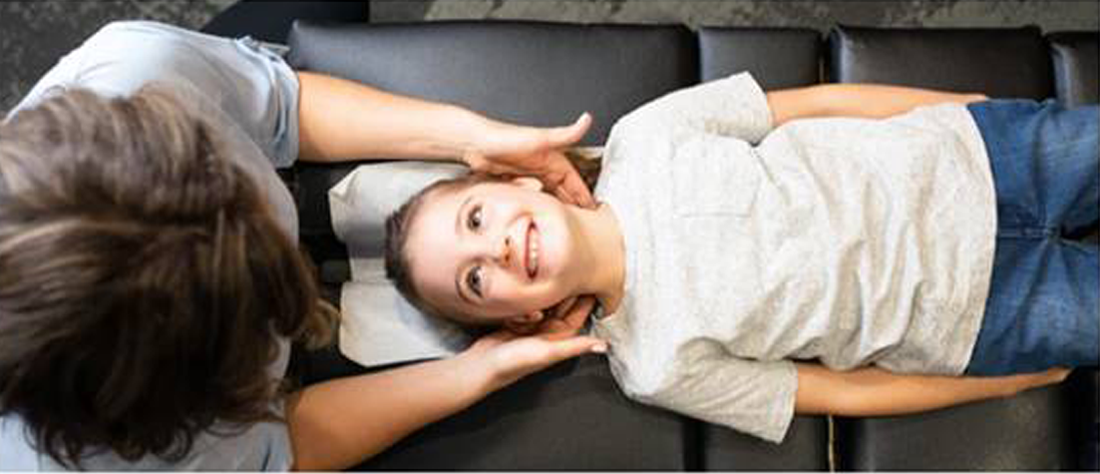Spinal Manipulation Compared with Back School and with Individually Delivered Physiotherapy for the Treatment of Chronic Low Back Pain: A Randomized Trial with One-year Follow-up
SOURCE: Clinical Rehabilitation 2010 (Jan); 24 (1): 26–36
Francesca Cecchi, Raffaello Molino-Lova, Massimiliano Chiti,
Guido Pasquini, Anita Paperini, Andrea A Conti, and Claudio Macchi
Fondazione Don Carlo Gnocchi,
Scientific Institute,
Florence, Italy.
francescacecchi2002@libero.it
FROM: Health Insights TodayA randomized trial by researchers at an outpatient rehabilitation department in Italy involving 210 patients with chronic, nonspecific low back pain compared the effects of spinal manipulation, physiotherapy and back school. The participants were 210 patients (140 women and 70 men) with chronic, non-specific low back pain, average age 59. Back school and individual physiotherapy were scheduled as 15 1-hour-sessions for 3 weeks. Back school included group exercise and education/ergonomics. Individual physiotherapy included exercise, passive mobilization and soft-tissue treatment. Spinal manipulation included 4-6 20-minute sessions once-a-week.
Outcome measures were the Roland Morris Disability Questionnaire (scoring 0-24) and Pain Rating Scale (scoring 0-6), assessed at baseline, discharge, and at 3, 6, and 12 months. 205 patients completed the study.
At discharge, disability score decreased by:
3.7 +/- 4.1 for back school, 4.4 +/- 3.7 for individual physiotherapy, and6.7 +/- 3.9 for manipulation.
The pain score reduction was 0.9 +/- 1.1, 1.1 +/- 1.0, 1.0 +/- 1.1, respectively. At 12 months, disability score reduction was 4.2 +/- 4.8 for back school, 4.0 +/- 5.1 for individual physiotherapy, 5.9 +/- 4.6 for manipulation; pain score reduction was 0.7 +/- 1.2, 0.4 +/- 1.3, and 1.5 +/- 1.1, respectively.
Spinal manipulation was associated with higher functional improvement and long-term pain relief than back school or individual physiotherapy, but received more further treatment at follow-ups;
pain recurrences and drug intake were also reduced compared to back school or individual physiotherapy.
The difference in their improved scores is quite dramatic:
After 12 months
| Intervention | Disability Score | Pain Rating |
| At Discharge | ||
| Spinal Manipulation | 6.7 +/- 3.9 | 1.0 +/- 1.1 |
| Individual Physiotherapy | 4.4 +/- 3.7 | 1.1 +/- 1.0 |
| Back School | 3.7 +/- 4.1 | 0.9 +/- 1.1 |
| Spinal Manipulation | 5.9 +/- 4.6 | 1.5 +/- 1.1 |
| Individual Physiotherapy | 4.0 +/- 5.1 | 0.4 +/- 1.3 |
| Back School | 4.2 +/- 4.8 | 0.7 +/- 1.2 |
NOTE: These numbers indicate the reductions in scores on the Roland Morris Disability Questionnaire and the Pain Rating Scale.
The Abstract:
OBJECTIVE: To compare spinal manipulation, back school and individual physiotherapy in the treatment of chronic low back pain.
There are more articles like this @ our:
DESIGN: Randomized trial, 12-month follow-up.
SETTING: Outpatient rehabilitation department.
PARTICIPANTS: 210 patients with chronic, non-specific low back pain, 140/210 women, age 59 +/- 14 years.
INTERVENTIONS: Back school and individual physiotherapy scheduled 15 1-hour-sessions for 3 weeks. Back school included: group exercise, education/ ergonomics; individual physiotherapy: exercise, passive mobilization and soft-tissue treatment. Spinal manipulation, given according to Manual Medicine, scheduled 4 to 6 20′-sessions once-a-week.
OUTCOME: Roland Morris Disability Questionnaire (scoring 0-24) and Pain Rating Scale (scoring 0-6) were assessed at baseline, discharge 3, 6, and 12 months.
RESULTS: 205 patients completed the study. At discharge, disability score decreased by 3.7 +/- 4.1 for back school, 4.4 +/- 3.7 for individual physiotherapy, 6.7 +/- 3.9 for manipulation; pain score reduction was 0.9 +/- 1.1, 1.1 +/- 1.0, 1.0 +/- 1.1, respectively. At 12 months, disability score reduction was 4.2 +/- 4.8 for back school, 4.0 +/- 5.1 for individual physiotherapy, 5.9 +/- 4.6 for manipulation; pain score reduction was 0.7 +/- 1.2, 0.4 +/- 1.3, and 1.5 +/- 1.1, respectively. Spinal manipulation was associated with higher functional improvement and long-term pain relief than back school or individual physiotherapy, but received more further treatment at follow-ups (P < 0.001); pain recurrences and drug intake were also reduced compared to back school (P < 0.05) or individual physiotherapy (P < 0.001).
CONCLUSIONS: Spinal manipulation provided better short and long-term functional improvement, and more pain relief in the follow-up than either back school or individual physiotherapy.






Leave A Comment